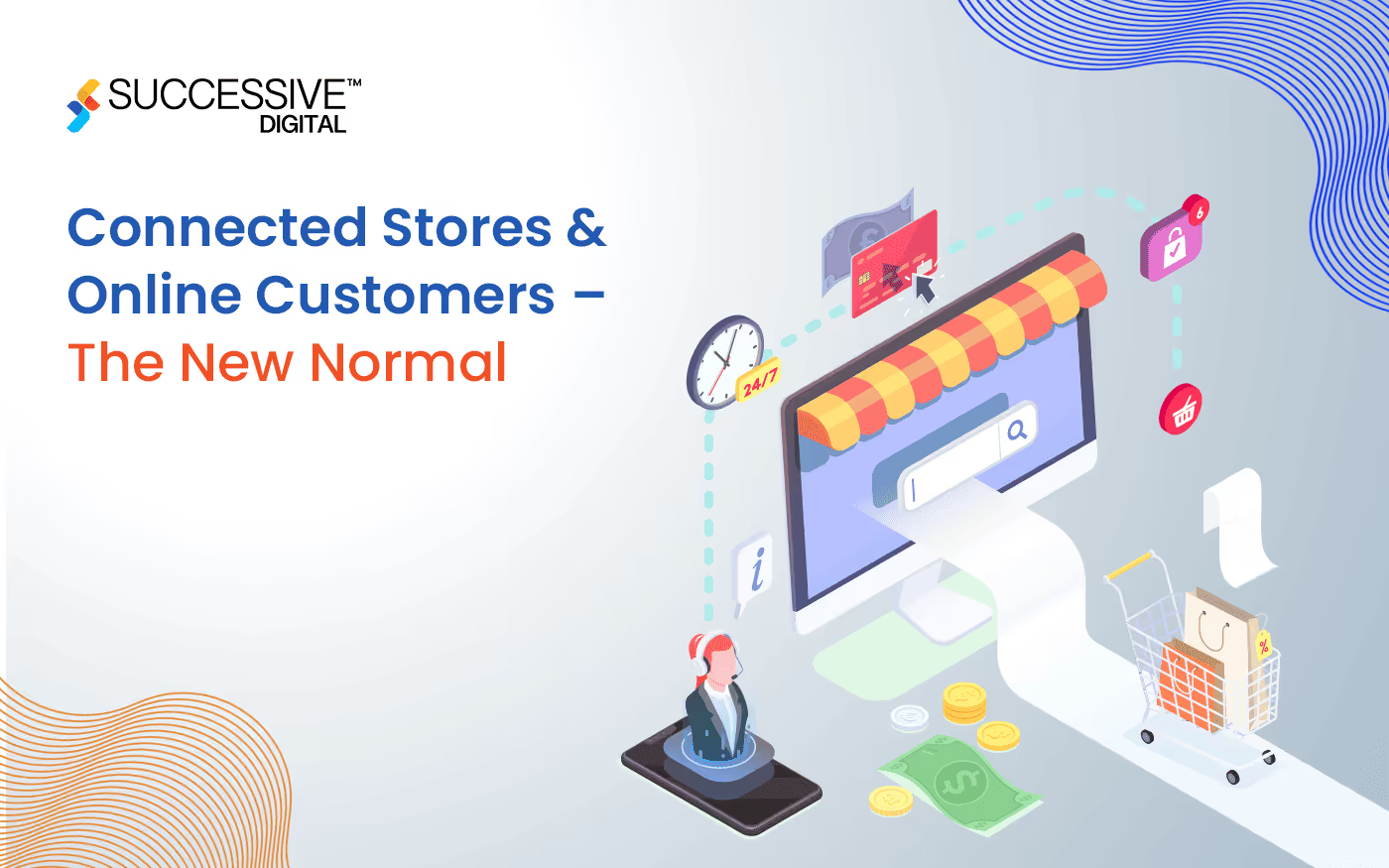- Covid 19 accelerated the pace of online shopping globally. According to the latest Nielsen report, grocery shopping tripled during the pandemic and continues growing exponentially.
- Expanded online options and promotional offers extended by brands encourage customers to shift entirely towards digital commerce and start their online retail journey.
- Limited stock and lower selection rates in-store are driving customers to shop online. Despite additional delivery and delays, users prefer to pay for convenience at the doorstep.
- Connected stores are rising, and companies are finding innovative ways to offer buyers seamless online-offline experiences with the latest e-commerce and in-store technologies.
Retail Innovation with Connected Stores
The global retail landscape has witnessed a significant transformation driven by technological advancements in people's shopping. Nothing has revolutionized this segment like the introduction of the internet and bright devices. In a world where online commerce is everything we do from morning to night; cutting-edge technologies are gradually taking over traditional brick-and-mortar retail outlets by providing seamless and personalized shopping experiences.
Order anything from food to tomorrow’s outfit at the convenience of your couch, and watching its delivery progress on your phone has completely revolutionized the retail and commerce industry. Alarming to retail giants with store-only business models, one of the most intriguing developments in this space is the emergence of connected stores in recent times.
Connected stores bridge the gap between physical and online retail channels, offering customers a seamless omnichannel experience. With integrated inventory management systems and real-time data synchronization, customers can quickly check product availability, compare prices, and purchase across various touchpoints, such as mobile devices, interactive kiosks, or digital signage. Brands have started introducing such integration into their retail outlets, allowing customers to enjoy the convenience of online shopping while benefiting from the in-person shopping experience.
Online Customers Reimagining the E-Commerce
As technology advances, online customers are no longer just passive, but dynamic users in structuring the far-reaching e-commerce area. Their requirements, preferences, and behavior have moved the trade onward, leading companies to reshape and redefine their strategies for offering their goods and services.
The expanding of smartphones era has amplified mobile commerce as a major element of the e-commerce industry. Now, consumers can compare and purchase products in comfort at any time or place directly from their personal phones. Businesses are turning to optimization of their websites and creating mobile apps with efficient user experiences to appeal to the increasing number of mobile customers. Mobile wallets and one-click payments also aid in simplifying the checkout process, contributing to a superior user experience.

The Future of Commerce is Digital
Digital transformation has no endpoint and businesses today need to constantly innovate and evolve based on consumer expectations market shifts to remain competitive It has also become essential for retail brands to keep a watch on what competitors are doing and creating strategic roadmap to outperform them with new digital experiences.
D2C Expected to Accelerate
Direct-to-Consumer (D2C) has become an important player in the digital commerce sector. The emergence of D2C brands is revolutionizing how shoppers locate, buy, and communicate with commodities. By removing the need for middle-men such as wholesalers and dealers, the brand can put its emphasis on the customer journey with the use of digital advertising, modern technology, and a nimble approach. As customers carry on to want special and tailored journeys, D2C's influence in the digital commerce industry will only amplify, offering chances for cutting-edge brands to thrive and reinvent the future of retail.
Enhance Personalization Through Data
Personalization has become a fundamental part of digital commerce, allowing companies to build stronger links with customers and refine their general experience. By understanding the requirements of customers, delivering custom-made product suggestions, creating tailored shopping encounters, and capitalizing on data through numerous channels, companies can foster loyalty, intensify engagement, and stimulate sales. As technology continues to advance, personalization in digital commerce is set to progress, giving businesses fresh possibilities to establish meaningful and individualized connections with their customers.
Behind and Scenes of Headless and APIs
Headless architecture and APIs have become pivotal components in digital commerce, empowering businesses to adapt, scale, and deliver exceptional experiences. The decoupling of front-end and back-end in headless architecture, coupled with APIs' flexibility and integration capabilities, allows businesses to innovate, enhance customer experiences, and future-proof their commerce solutions. By embracing headless architecture and APIs, companies are unlocking new possibilities and taking their digital commerce strategies to new heights.
.avif)









.jpg)









